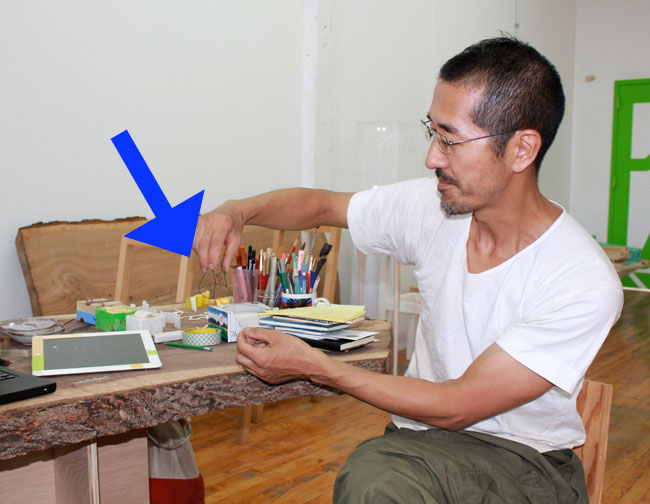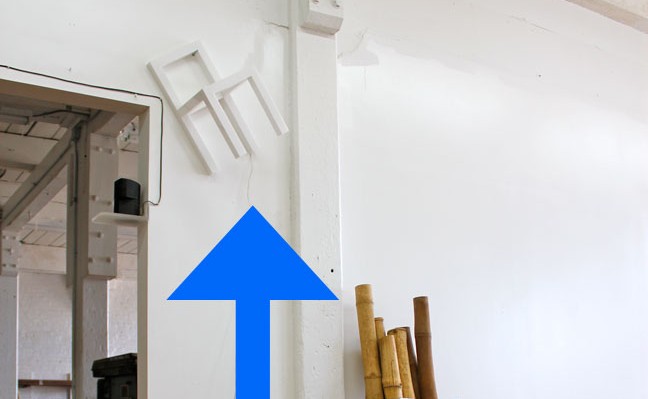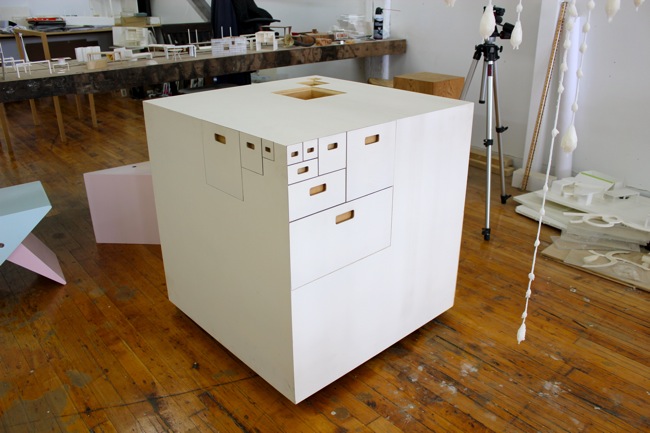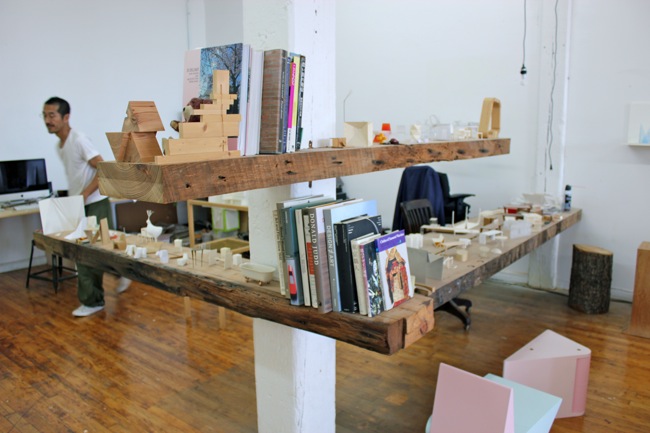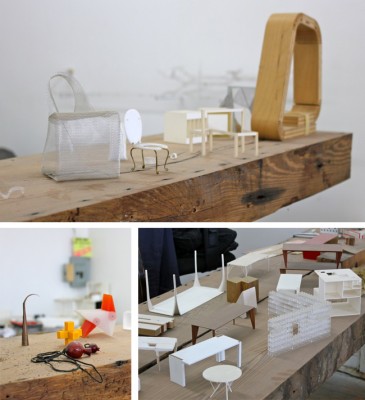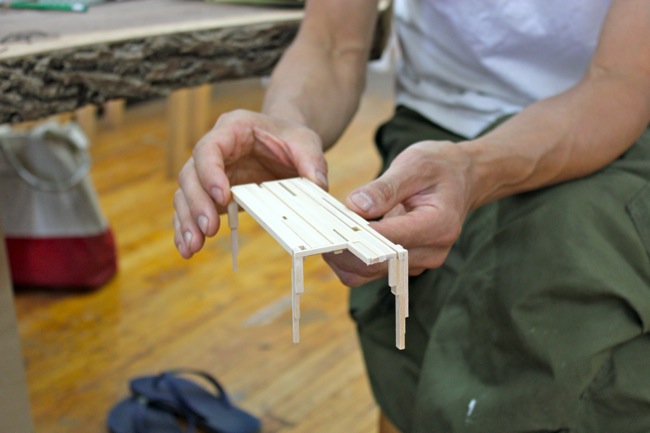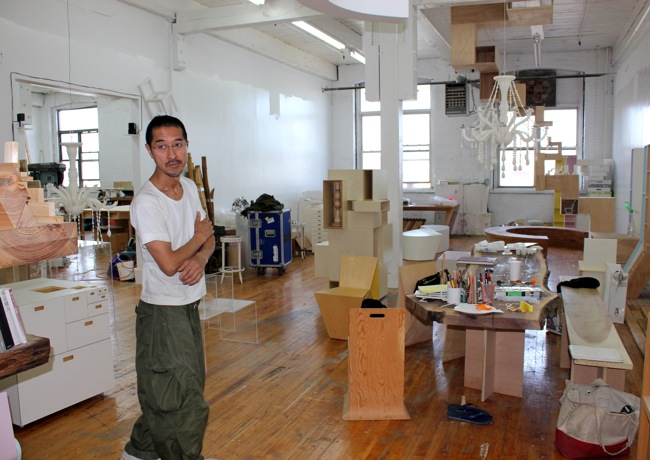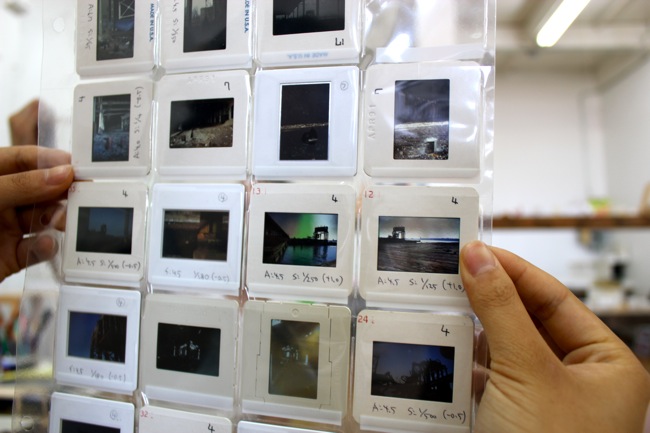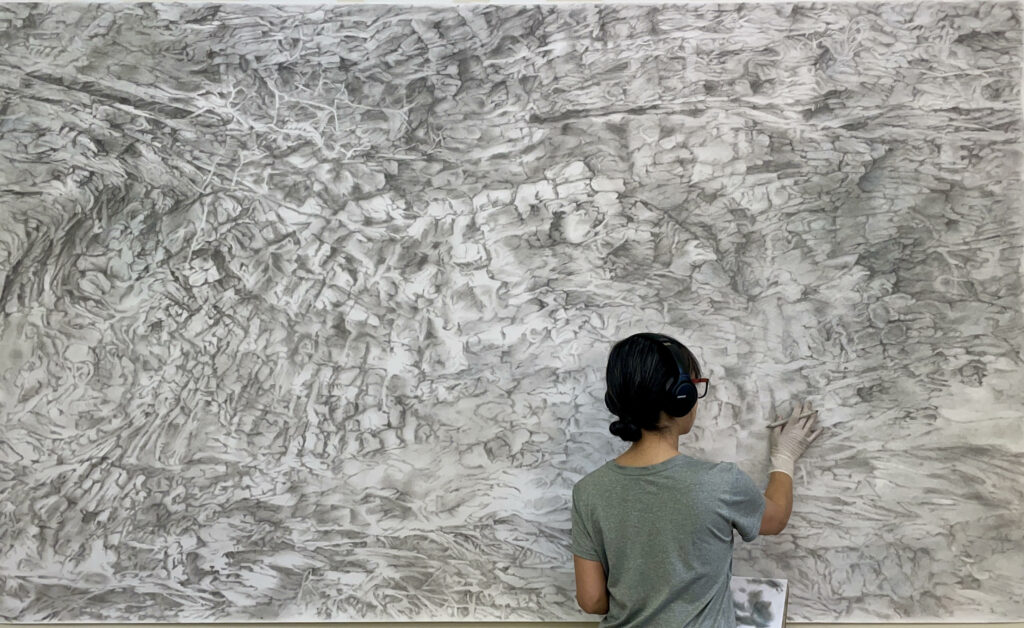Which is exactly why he got arrested.
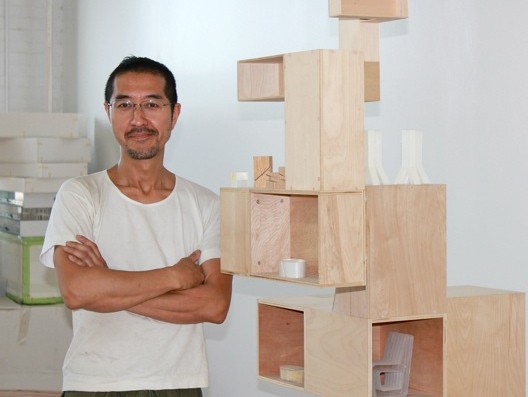
July 19, 2012
Some artists, like Woody Allen, declare their love for New York through a loudspeaker. Takeshi Miyakawa, a Brooklyn-based furniture designer, is not one of those artists. Rather, he goes about it more quietly, looking to draw no attention to himself—and that’s exactly why the “I ? New York” incident still burns.
It happened on May 19, when Miyakawa was arrested for hanging plastic “I ? New York” bags filled with white LED lights and batteries on trees in the West Village and Williamsburg. Concerned residents—and who knows, terrified tourists, too?—reported to the police bomb squad that neighborhood trees were festooned with suspicious packages; the streets were promptly evacuated and Miyakawa was cuffed. The public art exhibit—timed to coincide with the International Contemporary Furniture Fair—landed Miyakawa in Rikers with a 30-day sentence and a prescribed mental evaluation. The charges: reckless endangerment, criminal nuisance, and planting a false bomb. He was released after a days-long stint and was just recently pronounced sane enough to stand trial. Miyakawa’s new court date has been scheduled for July 19. (Update: Charges were dropped.)

“It was quite rough in prison,” Miyakawa recalls. “The cell was very crowded and most of us were sleeping on a concrete floor. It was really freezing cold so I didn’t sleep much for three nights. However, in general, other inmates were quite sympathetic about my situation once I told them my story. There was a TV so many of them saw me on the news, so they treated me with respect. Two of them asked for my autograph.”
Signs of the alleged bomb-planting fiasco still sway throughout Brooklyn. During a recent stroll around Williamsburg, we pass a tree on Bedford Avenue where a ragged plastic bag—one of his—still hangs, now emptied of its contents, flapping in the wind. Miyakawa, suddenly skittish, scurries away from his creation. He doesn’t want to be photographed with it and tells me to meet him a block away. The nervousness seems uncharacteristic of the artist.
Perhaps he recalls being carried away in handcuffs, the cold stubbornness of his judge. Or perhaps it still stings that the “I ? New York” installation’s most important message was missed: his love for his adopted home.
The Japan-born Miyakawa, 50, moved to New York in 1989. The city, he says, is an ever-reliable boon to his creativity.
One of his most poignant homages to the city is also one of his simplest. “Affordable Housing” (plywood, oil paint finish) is a set of drawers stacked in an H-like shape to resemble public housing units in New York. Miyakawa knows that beauty can grow out of efficiency and necessity, an ethos he captures in his geometric tables, whimsical chairs, and innovative light fixtures. His pieces can verge into the philosophical, too. “US Storage” (white acrylic), a shelf that resembles an American flag, is a commentary on government and citizenship, he says. “In order to have a democracy, you have to fill it yourself.” He elaborates further on this website: “Ask not what US can store for you, instead ask what you can store in it.”
Japan is “a part of my DNA,” he affirms. “But I feel more American now than before.” (Miyakawa is a Japanese citizen but is contemplating becoming a naturalized U.S. citizen. His legal troubles, however, may complicate that process.)
“My designs, too, are less Japanese,” he adds. When I ask him to describe a “Japanese design,” he points to “Fractal 23,” his modular drawer system (plywood, oil paint finish). When I ask for an example of a “non-Japanese design,” he points to his most recent work, “Candelier,” an ornate “candle” chandelier carved entirely out of wax that, when lit, burns itself into oblivion. It speaks more to an existential crisis than a Zen state of mind.
Inside his Greenpoint art studio, Miyakawa shares more about his art and designs.
What inspires Miyakawa? “Little pieces of conversations,” he says. “When I walk around, I never put in headphones. You have to listen to what the people are saying.” Aside from eavesdropping, Miyakawa has also gotten into the habit of collecting little bits of trash. He shows us a piece of wire bent into an angular form, originally used to restrain a champagne cork. “Isn’t this a nice shape? It’s interesting what things are thrown out.”
He empties his deep-pocketed cargo pants—snagged from an army store in Jersey on the cheap. “You can put lots of stuff in here,” he says, unloading his pockets to reveal keys, nails, and a smudged, cracked iPhone. Frugality is more than habit for Miyakawa; it is a philosophy. His preferred environment is a spare one; Miyakawa works mostly alone.
Miyakawa graduated from Tokyo Science University in architecture, but his education started much earlier. As a boy, he used to watch his father make wooden airplanes. He recalled that the trick to curving a thin strip of bamboo was to gently heat it over an open flame. Decades later, his own woodwork would include “Rite of Spring” (plywood, bass wood), an installation comprised of 25 open boxes that extend from the floor and the ceiling; they meet but never touch in the center. Miyakawa cites inspiration from Stravinsky’s original composition of the same name, which has long been associated with an asymmetrical and polyrhythmic expression of life and growth.
He specializes in well-crafted high-concept (but functional) furniture, like this oval table. “Zero Shift” splits into two sliding symmetrical parts and can be used as both a table and a bench. It is an example of Miyakawa’s penchant for minimalist and functional designs.
Miyakawa’s “Holey Chair” (white acrylic) is a chair without a seat or back, illuminated by internal LED lights. They’ve been exhibited at the Dwell on Design convention in Los Angeles, the display windows of upscale clothing retailer SportMax, and in public spaces. When one of the chairs was stolen during a public exhibit, “it was actually quite flattering,” Miyakawa says.
Above all, Miyakawa’s devotion to his craft verges on monastic. He is a minimalist, valuing quality, integrity, and simplicity over quantity, speed, and expediency. “Fractal 23,” dubbed by Spoon & Tamago as Miyakawa’s pièce de résistance, is an exemplar of this fact. This Rubik’s Cube-like design fits 23 different sized drawers, some only a few cubic inches. The cube, which accomplished the mathematical feat of using virtually all its volume, made a splash in design blogs like Designboom. Following the extra publicity, Miyakawa set the price of the drawers at $20,000—not to maximize profits but to discourage people from commissioning the piece.
In his studio, two giant wooden planks serve as a “small museum” to scores of his miniature studies. Miyakawa has resisted the digitization of design and produces all his models by hand.
Miniature studies for tables, chairs, and storage units—as well as a couple of knickknacks picked up from the streets.
Since arriving in New York in 1989 from Japan, Miyakawa has been a student, a cabinet maker’s assistant, and a model-maker for famed architect Rafael Viñoly. (The last job he still holds.) He is currently designing a table that uses all the leftover scraps of wood—planks of different lengths and tree types—from previous projects. Here, one of the models for the table.
Miyakawa eschews trends, such as eco-design, but maintains firm commitment to his own brand of honest craftsmanship. That includes repurposing leftover wood from his projects and always connecting crucial furniture joints himself (versus delegating such tasks to a second fiddle). No matter how much his stature grows—and it is growing, as evidenced by this recent profile—he will likely maintain the spare, quiet lifestyle he has enjoyed for the past decade. But Miyakawa, now a Brooklyn cause célèbre, is not a lonely character. His large social circle has played a significant role in fighting his incarceration, by launching this petition and Facebook group on his behalf.
Lately, Miyakawa is spending more time on photography. These negatives are from a shoot on the Williamsburg waterfront. Years ago at dusk, Miyakawa trespassed onto a construction site, likely some shiny upscale condominium now, and started taking pictures in the encroaching night. The photos are dark and somber: black steel beams jutting into the sky and the shadowy undergirth of the Williamsburg Bridge. A few are self-portraits, with Miyakawa’s naked body laying perpendicular against the metal skeleton of an unfinished building. They are beautiful but desolate images, a raw version of New York seen through the eyes of a solitary individual. Quiet, rugged individualism has gotten Miyakawa and his designs this far—and into this hole of a legal case. It remains to be seen whether this approach remains his modus operandi in the future. We hope it does.

